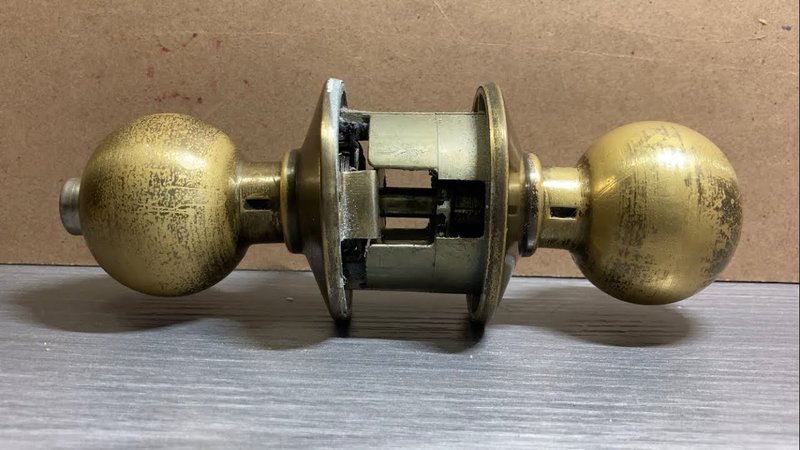
Keyed interior door knobs are handy, especially if you need privacy in a home office or want to secure a bedroom. Sometimes, though, these knobs can misbehave. Whether you have a Kwikset, Schlage, or another brand, the troubleshooting steps can be straightforward if you know what to look for. Let’s dive into how to get that knob locking smoothly again.
Understanding How a Keyed Interior Door Knob Works
Before diving into troubleshooting, it’s helpful to understand the basic mechanics behind a keyed door knob. Picture this: inside the knob is a cylindrical lock mechanism that relies on a metal pin system. When you insert your key and turn, the pins align, allowing the lock to open or secure the door. It’s quite a nifty little gadget, right?
Now, if something goes wrong—like the pins are stuck or the knob isn’t functioning properly—you’ll notice it immediately. Imagine trying to turn a key and the door handle just won’t budge. Knowing how these knobs work can help simplify the troubleshooting process.
Often, the issue is not with the key itself but rather with the locking mechanism or the knob. Something could be jammed, or the internal components might be misaligned. Let’s explore those common problems and how to fix them.
Identifying Common Issues
So, what causes a keyed interior door knob not to lock? Here are a few common culprits:
- Misaligned Door Frame: If your door isn’t aligned with the frame, it may not latch correctly.
- Debris in the Lock: Dust, dirt, or lint can accumulate inside the lock mechanism, preventing the pins from moving smoothly.
- Worn Out Key: Over time, keys can wear down, making it difficult to align the pins correctly.
- Broken Components: Internal parts, such as springs or pins, can break, rendering the lock useless.
Recognizing these issues can save you time and effort. For instance, if your key won’t turn, simply checking for dirt and ensuring it’s clean could be your first line of defense.
Step-by-Step Troubleshooting Guide
Let’s break it down into manageable steps. By following this guide, you can troubleshoot your keyed interior door knob effectively.
1. Check for Misalignment
Start by examining the door and frame. If the knob isn’t lining up with the strike plate, it won’t latch properly. Here’s how to check:
– Close the door and look at the alignment.
– If there’s a gap, gently push the door to see if it fits better.
– If the door is out of alignment, you may need to adjust the hinges or strike plate for a better fit.
2. Clean the Lock Cylinder
A dirty lock can cause serious issues. Here’s a quick cleaning guide:
– Use a can of compressed air to blow out any dust or debris in the lock cylinder.
– If you notice deeper dirt, a small amount of lubricant spray can help. Just avoid over-saturating it—less is more!
3. Inspect the Key
Take a closer look at your key. Is it worn or damaged? If it seems to fit awkwardly or struggles to turn, this might be the problem. You can try getting a new key made from an existing one. Local hardware stores often have key cutting machines that can help.
4. Examine Internal Mechanisms
If you’re comfortable doing so, it might be worthwhile to remove the knob and check the internal components. Here’s how:
– Unscrew the screws holding the knob in place.
– Once removed, inspect the pins and springs. If anything looks broken or out of place, it may need to be replaced.
When to Call a Professional
Sometimes, despite your best efforts, the issue might be beyond a simple fix. If you’ve gone through the steps above and your keyed interior door knob still won’t lock, it might be time to call in a professional locksmith.
Locksmiths can assess the problem quickly and offer solutions that you may not have considered. They can also replace broken locks or re-key them to ensure your door provides maximum security.
Preventive Measures for Longevity
Once you’ve tackled the issue, let’s talk about how to keep your door knob working efficiently. Here are some tips:
- Regular Cleaning: Make it a habit to clean your lock every few months to prevent dirt buildup.
- Avoid Over-Turning: When locking or unlocking, don’t force the key. If it resists, reassess the situation instead of applying excessive force.
- Lubricate Periodically: Use a graphite lubricant to keep the lock’s internal components moving smoothly.
These proactive steps can save you from unexpected lock troubles down the line.
Dealing with a keyed interior door knob that won’t lock can feel frustrating, but it’s usually a straightforward fix. By understanding how the lock works and following the troubleshooting guide, you can often resolve the issue yourself. And remember, if all else fails, you’re not alone. Professionals are just a call away when you need expert help. Now, go ahead and give that lock some attention—it’ll thank you for it!
